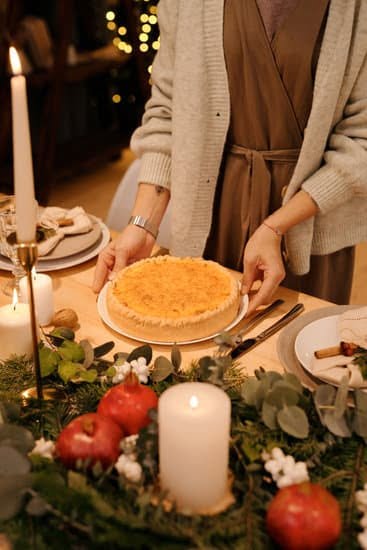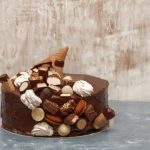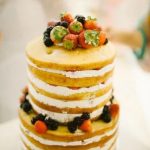Are you ready to learn how to decorate a cake with different colors? The art of cake decorating is not only a delightful way to personalize your baked creations, but it also allows for endless opportunities for creativity and expression. In this article, we will explore the techniques and tips for adding vibrant and eye-catching colors to your cakes, whether you are a beginner or experienced baker.
When it comes to creating colorful cakes, choosing the right base is crucial. From classic vanilla to rich chocolate or decadent red velvet, the type of cake you use will set the stage for your colorful design. Additionally, having the right tools and supplies on hand is essential for successful cake decorating. From piping bags and tips to food coloring gels and edible decorations, we will cover everything you need to bring your colorful cake vision to life.
Understanding color theory is key when it comes to mixing and matching different hues on a cake. We will delve into the basics of color theory and provide tips for creating harmonious and visually appealing color combinations.
Whether you prefer working with buttercream, fondant, or icing, there are various techniques for adding color to your cakes that we will explore in this guide. So let’s embark on this colorful journey as we uncover the art of decorating a cake with different colors.
Preparing Your Cake for Decoration
When preparing to decorate a cake with different colors, the first step is to ensure that you have a suitable base. Choosing the right type of cake will not only impact the overall appearance of your creation but also affect how well it holds up under the weight of decorations. Here are some options for preparing your cake before applying colorful designs:
- Traditional Layer Cake: A classic choice for colorful decorating, layer cakes provide a sturdy foundation for adding multiple colors and textures. Whether you opt for a basic vanilla or chocolate cake, or something more intricate like red velvet or carrot cake, the layers allow for different colors to be visible when sliced.
- Sheet Cake: If you’re looking to create a vibrant and eye-catching design, a sheet cake provides a large canvas for showcasing your colorful decorations. With a flat surface, it’s easy to cover with an even layer of frosting and experiment with various color combinations.
- Cupcakes: Perfect for individual servings or smaller gatherings, cupcakes offer a fun and versatile option for decorating with different colors. Each cupcake can be decorated with its own unique design, making them ideal for showcasing a variety of colorful techniques.
No matter which type of cake you choose as your base, it’s important to ensure that it is baked and cooled completely before attempting any decoration. This will prevent the frosting and colors from melting or smudging, allowing you to achieve professional-looking results.
To achieve the best results when using multiple colors in your decorations, consider using white or light-colored bases. This will allow the colors to pop and stand out more effectively, creating visually stunning creations that will impress anyone who sees them.
By selecting the right base for your colorful creations and ensuring it is properly prepared, you’ll be well on your way to mastering the art of how to decorate a cake with different colors.
Tools and Supplies
When it comes to decorating a cake with different colors, having the right tools and supplies is essential to achieve the desired effect. From mixing colors to applying them onto the cake, using the proper equipment can make all the difference in creating a visually stunning confection. In this section, we will explore the essential items needed for colorful cake decorating.
Coloring Agents
The first step in decorating a cake with different colors is to have a variety of coloring agents on hand. Gel-based food coloring is ideal for achieving vibrant and intense hues without altering the consistency of the icing or fondant. Additionally, having a set of primary colors allows for endless color combinations and custom shades.
Piping Bags and Tips
Another crucial tool for colorful cake decorating is piping bags and tips. These enable precision when adding details or intricate designs in various colors. Using different tips can also create distinct textures and effects, such as stars, rosettes, or ruffles, enhancing the visual appeal of the decorated cake.
Palette Knife and Offset Spatula
A palette knife and offset spatula are indispensable for spreading and smoothing out colored buttercream or fondant on the cake’s surface. These tools ensure an even application of color and provide control when blending multiple shades together seamlessly.
By having these essential items for colorful cake decorating at your disposal, you can confidently tackle any design with different colors and elevate your creations to new artistic heights. Whether you are a seasoned baker or just starting out, investing in quality tools and supplies will undoubtedly enhance your ability to bring colorful visions to life on your cakes.
Color Theory
When it comes to decorating a cake with different colors, understanding the basics of color theory is essential. This involves knowing how to mix and match colors in order to create visually appealing designs.
The color wheel is a helpful tool for this, as it illustrates the relationships between primary, secondary, and tertiary colors. By familiarizing yourself with the color wheel, you can learn about complementary, analogous, and triadic color schemes, which are useful for creating harmonious and balanced cake decorations.
One of the key aspects of decorating a cake with different colors is knowing how to mix various shades effectively. This requires experimenting with different ratios of food coloring until you achieve the desired hue.
It’s important to start with a small amount of coloring and gradually add more as needed, as it can be easy to overdo it. Additionally, understanding how different colors interact with each other is crucial for creating beautiful gradients and ombre effects on your cakes.
Working With Fondant and Icing
When working with fondant or icing, it’s important to consider their inherent color properties. Fondant may have a natural off-white or light creamy tone, while icing can range from pure white to off-white depending on the ingredients used. These base colors can affect the final result when adding food coloring.
For example, a small amount of blue food coloring added to fondant may result in a pastel blue shade due to its underlying creaminess. Understanding these nuances can help you achieve more accurate and consistent color outcomes when decorating your cakes.
Different Techniques for Adding Color
Adding color to your cake is one of the most exciting parts of the decorating process. Whether you’re using buttercream, fondant, or icing, there are different techniques you can use to achieve vibrant and eye-catching colors on your cake. Each type of coloring medium has its own unique characteristics and methods, so it’s essential to understand how to work with them effectively.
When using buttercream, gel or powdered food coloring is often preferred over liquid food coloring, as it doesn’t affect the consistency of the frosting as much. Start by adding a small amount of coloring to your buttercream and mix it thoroughly before adding more, as you can always add more color but can’t take it away once it’s mixed in. This will help you achieve the exact shade you desire without compromising the texture of your frosting.
Fondant is another versatile medium for adding color to your cake. You can either purchase pre-colored fondant or color white fondant yourself using gel food coloring. Knead the fondant until the color is evenly distributed throughout.
If you need multiple colors for your design, make sure to keep them covered with plastic wrap when not in use to prevent them from drying out. Lastly, for icing, whether royal icing or glaze icing, gel food coloring is also recommended for achieving vibrant hues without altering the texture too much. It’s important to note that royal icing tends to dry quickly once colored, so work efficiently and cover any unused portions tightly with plastic wrap.
| Coloring Medium | Recommended Coloring |
|---|---|
| Buttercream | Gel or powdered food coloring |
| Fondant | Gel food coloring or pre-colored fondant |
| Icing | Gel food coloring |
Creating Multi-Colored Designs
When it comes to decorating a cake with different colors, there are several techniques you can use to achieve stunning multi-colored designs. One of the most popular methods is the “ombre” effect, where the colors blend seamlessly from light to dark.
To create this effect, start with a base creamy color and gradually add more coloring as you work your way up the sides of the cake. This can be achieved with buttercream, fondant, or icing, depending on your preference.
Another way to create eye-catching multi-colored designs is by using the “marbling” technique. This involves blending different colored batters or fondant together before applying them to the cake. The result is a unique and intricate pattern that is sure to impress your guests. To achieve this effect, simply mix different colored batters or fondant together in a swirling motion, being careful not to overmix.
For those looking to take their multi-colored cake designs to the next level, consider using edible paint or food coloring markers to add intricate details and patterns. This allows for precise and detailed designs that can truly make your cake stand out. Whether you’re adding floral motifs or geometric patterns, these tools can help you achieve professional-looking results.
By incorporating these tips and tricks into your cake decorating process, you can create stunning multi-colored designs that will leave a lasting impression. Experiment with different techniques and don’t be afraid to get creative with your color choices. With practice and patience, you’ll soon be able to decorate a cake with different colors like a pro.
Using Piping Bags and Tips
When it comes to decorating a cake with different colors, using piping bags and tips is essential for achieving precision and intricate designs. Piping bags are a versatile tool that allows you to control the flow of icing or frosting, making it easier to create patterns, flowers, lettering, and other detailed decorations on your cake. Coupled with a variety of tips in different shapes and sizes, piping bags open up a world of possibilities for colorful cake decorating.
To start using piping bags and tips, you first need to choose the right size and type of tip for the design you have in mind. Small round tips are ideal for creating fine lines and writing, while star-shaped tips can produce beautiful rosettes and borders.
Larger tips are perfect for covering larger areas with frosting or creating bold patterns. Familiarizing yourself with the different types of tips available will give you more options when it comes to decorating your cake with different colors.
It’s important to practice good technique when using piping bags and tips to ensure professional-looking results. Holding the bag correctly and applying even pressure is crucial for consistent lines and shapes. By mastering the art of using piping bags and tips, you’ll be able to add intricate and eye-catching designs to your colorful cakes that will impress your friends, family, or clients.
| Using Piping Bags and Tips | Mastering the Art of Precision |
|---|---|
| Precision designs | Controlling the flow of icing/frosting |
| Choosing the right size/type of tip | Familiarizing yourself with different types of tips |
| Good technique is crucial | Creating consistent lines and shapes |
Finishing Touches
After successfully adding colorful designs to your cake, the next step is to add the finishing touches with edible decorations and accents. These final details can take your cake from beautiful to truly stunning, showcasing your creativity and skill as a baker. Here are some ideas for adding those extra touches to make your colorful creation stand out:
- Sprinkles: Sprinkles come in a wide variety of shapes, sizes, and colors, making them a versatile and easy way to add pops of color and texture to your cake. Whether you choose traditional round sprinkles or something more unique like metallic or shaped sprinkles, they can easily enhance the overall look of your design.
- Edible flowers: If you want to add a touch of elegance to your colorful cake, consider using edible flowers as a decoration. Fresh blooms like pansies, roses, or violets can be used to create a stunning floral arrangement on top of your cake.
- Chocolate shavings or curls: For a more sophisticated look, chocolate shavings or curls in different colors can be used to create intricate patterns and designs on the surface of your cake. This is an excellent option for adding both color and flavor to your creation.
Adding these finishing touches will not only enhance the visual appeal of your colorful cake but also provide an opportunity to incorporate additional flavors and textures. By carefully choosing and arranging edible decorations and accents, you can elevate your cake from simply colorful to an impressive work of art that will surely impress any audience.
Remember that while decorating with different colors opens up endless possibilities, it’s important to exercise restraint when adding final touches. Over-decorating can sometimes detract from the overall beauty of the design. Take care to balance visual impact with tasteful restraint for a truly remarkable finished product.
Troubleshooting
Decorating a cake with different colors can be a fun and creative process, but it also comes with its own set of challenges. Common issues such as uneven coloring, smudges, and air bubbles can occur when working with multiple colors on a cake. Fortunately, there are several ways to troubleshoot these problems and ensure that your colorful creation turns out just as you imagined.
One common issue when decorating a cake with different colors is achieving even color distribution. To avoid this problem, make sure to mix your colored icing or fondant thoroughly before applying it to the cake. This will help prevent streaks or patches of uneven color. If you do encounter uneven coloring, gently smoothing the surface with a clean, dry brush or offset spatula can help blend the colors together for a more cohesive look.
Another issue that may arise is smudging or smearing of colors while working on the cake. This can happen when layers of different colored icing or fondant come into contact with each other. To prevent smudging, be mindful of where you place each color on the cake and try to minimize overlapping as much as possible. If smudging does occur, carefully use a clean brush or small tool to blend and smooth out the affected areas.
Air bubbles in colored icing or fondant can also be an unwelcome surprise when decorating a cake with different colors. To avoid this issue, knead your fondant thoroughly before rolling it out to remove any trapped air. When piping colored icing onto the cake, gently tap the filled piping bags on the countertop to release any air bubbles before starting to decorate.
By being aware of these common issues and knowing how to fix them, you can confidently tackle the challenge of decorating a cake with different colors and create stunning and vibrant designs that will impress everyone who sees them.
Conclusion
In conclusion, decorating a cake with different colors is a delightful and creative process that allows you to showcase your artistic talents and culinary skills. By following the right techniques and using the appropriate tools and supplies, you can create stunning multi-colored designs that will impress both friends and family. Whether you choose to work with buttercream, fondant, or icing, understanding color theory and practicing various decorating methods will help you achieve beautiful results.
As you continue to experiment with different techniques for adding color and creating eye-catching designs, remember to also have fun with the process. Don’t be afraid to let your creativity shine through as you decorate your cakes with vibrant hues and intricate patterns. By mastering the use of piping bags and tips, as well as adding finishing touches such as edible decorations, you can elevate your colorful creations to a whole new level.
Lastly, don’t hesitate to share your colorful cake creations with others. Whether it’s through social media, baking blogs, or in-person gatherings, showcasing your cakes can inspire and motivate others to explore the art of decorating with different colors.
By sharing your knowledge and experiences on how to decorate a cake with different colors, you can become an inspiration for aspiring bakers and decorators everywhere. So go ahead and let your vibrant creations be a source of joy and inspiration for others.
Frequently Asked Questions
How Do You Frost a Cake With Different Colors?
Frosting a cake with different colors can be achieved by using a piping bag and different colored frostings. Start by piping a border around the edge of the cake with one color, then fill in the middle with another color. Use an offset spatula to smooth out the frosting and blend the two colors together for a seamless look.
How Do You Blend Icing Colors on a Cake?
To blend icing colors on a cake, start by piping lines or dots of different colored icing onto the cake. Then, use a clean, damp brush to gently blend the colors together, creating a subtle ombre effect or marbled look. Take care not to over-mix the colors to maintain distinct shades.
How Do You Swirl Two Colors of Frosting on a Cake?
Swirling two colors of frosting on a cake involves using two separate piping bags filled with different colored frostings. Pipe alternating dollops or lines of each color onto the cake, then use a spatula or knife to gently swirl and blend them together. This technique creates a beautiful marbled effect for an eye-catching presentation.

Welcome to our cake decorating blog! My name is Destiny Flores, and I am the proud owner of a cake decorating business named Cake Karma. Our mission is to provide delicious, beautiful cakes for all occasions. We specialize in creating custom cakes that are tailored specifically to each customer’s individual needs and tastes.





